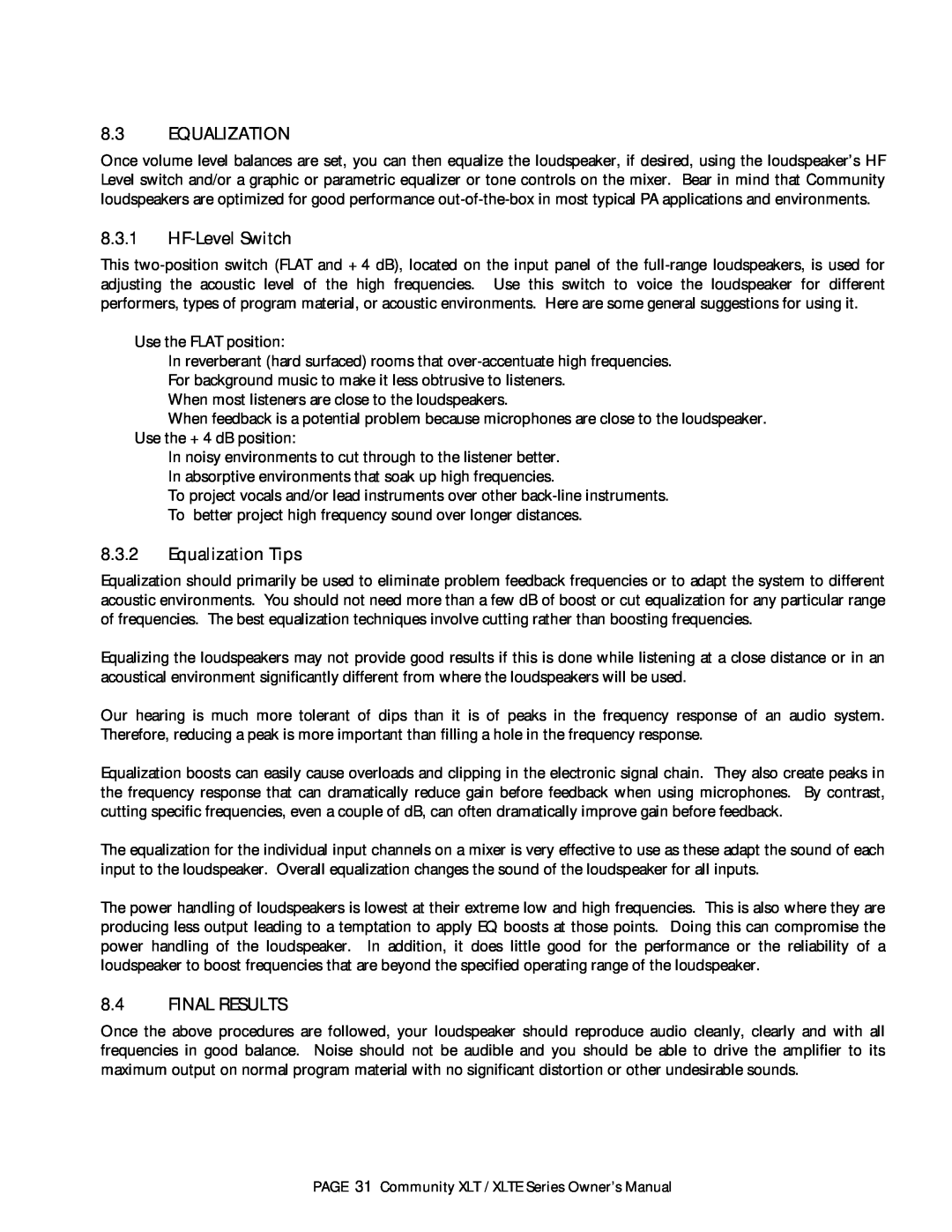8.3EQUALIZATION
Once volume level balances are set, you can then equalize the loudspeaker, if desired, using the loudspeaker’s HF Level switch and/or a graphic or parametric equalizer or tone controls on the mixer. Bear in mind that Community loudspeakers are optimized for good performance
8.3.1HF-Level Switch
This
Use the FLAT position:
In reverberant (hard surfaced) rooms that
When most listeners are close to the loudspeakers.
When feedback is a potential problem because microphones are close to the loudspeaker. Use the +4 dB position:
In noisy environments to cut through to the listener better. In absorptive environments that soak up high frequencies.
To project vocals and/or lead instruments over other
8.3.2Equalization Tips
Equalization should primarily be used to eliminate problem feedback frequencies or to adapt the system to different acoustic environments. You should not need more than a few dB of boost or cut equalization for any particular range of frequencies. The best equalization techniques involve cutting rather than boosting frequencies.
Equalizing the loudspeakers may not provide good results if this is done while listening at a close distance or in an acoustical environment significantly different from where the loudspeakers will be used.
Our hearing is much more tolerant of dips than it is of peaks in the frequency response of an audio system. Therefore, reducing a peak is more important than filling a hole in the frequency response.
Equalization boosts can easily cause overloads and clipping in the electronic signal chain. They also create peaks in the frequency response that can dramatically reduce gain before feedback when using microphones. By contrast, cutting specific frequencies, even a couple of dB, can often dramatically improve gain before feedback.
The equalization for the individual input channels on a mixer is very effective to use as these adapt the sound of each input to the loudspeaker. Overall equalization changes the sound of the loudspeaker for all inputs.
The power handling of loudspeakers is lowest at their extreme low and high frequencies. This is also where they are producing less output leading to a temptation to apply EQ boosts at those points. Doing this can compromise the power handling of the loudspeaker. In addition, it does little good for the performance or the reliability of a loudspeaker to boost frequencies that are beyond the specified operating range of the loudspeaker.
8.4FINAL RESULTS
Once the above procedures are followed, your loudspeaker should reproduce audio cleanly, clearly and with all frequencies in good balance. Noise should not be audible and you should be able to drive the amplifier to its maximum output on normal program material with no significant distortion or other undesirable sounds.
PAGE 31 Community XLT / XLTE Series Owner’s Manual
